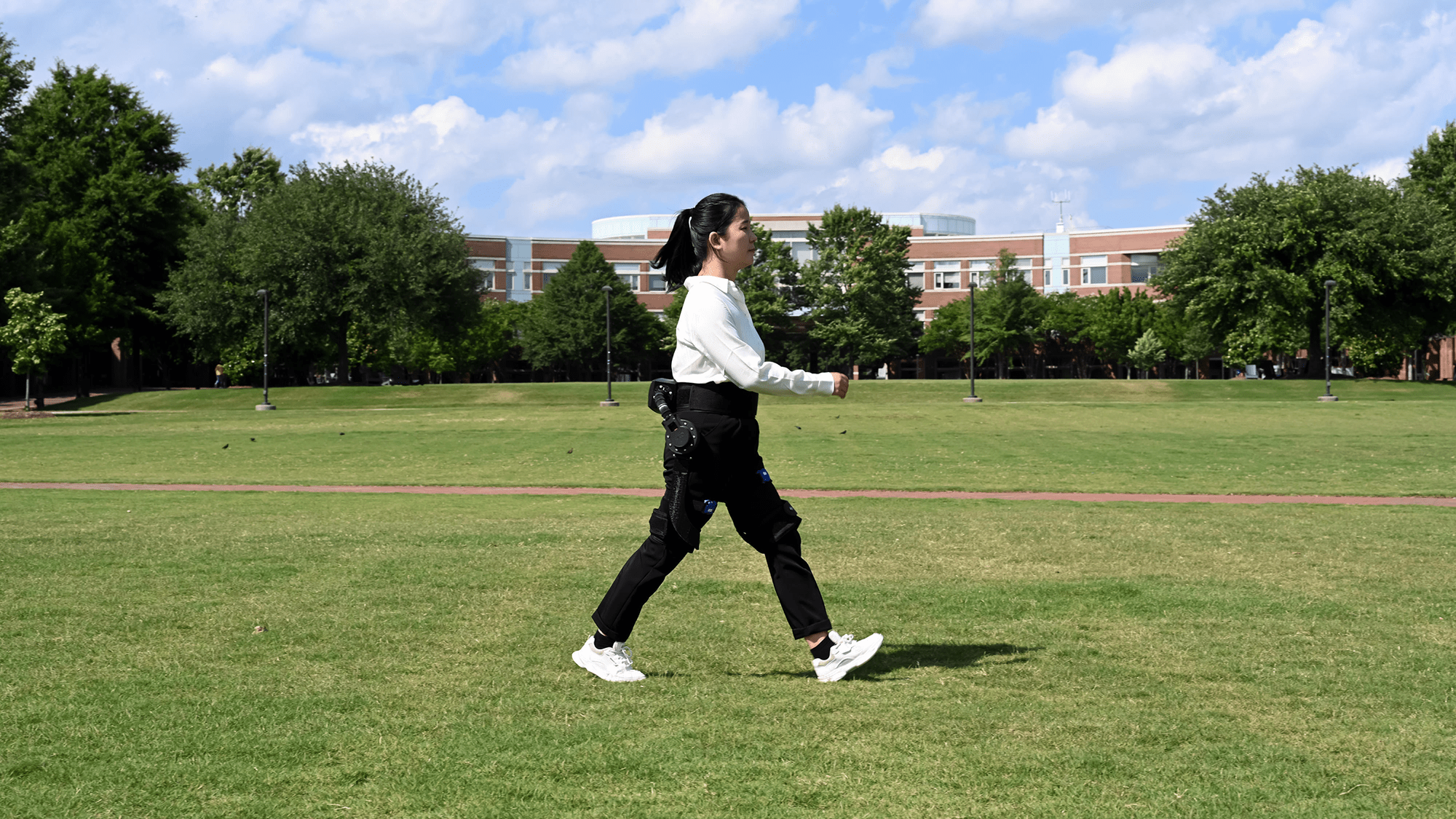Simulations can cut down on time-consuming testing typically performed by humans.

Posted on Jun 14, 2024 1:33 PM EDT

Human testers using the simulation trained exoskeleton used 24.4% less energy while walking. Credit: Embry-Riddle / David Masse
In the US alone, the Centers for Disease Control (CDC) estimates around 12% of the population lives with a mobility disability making it difficult for them to walk or climb stairs. Some 1.3 billion people worldwide reportedly face similar challenges. Robotic exoskeletons—sci-fi inspired mechanical support suits —have been heralded by some as one potential solution but actual access to those devices remains few and far between. Researchers are hoping they can help shrink that accessibility gap thanks to a new, AI-enabled testing method that they believe could greatly reduce the amount of in-person training time required to make these devices function properly.
Exoskeletons, which are also sometimes referred to as “exosuits” are robotic wearable devices that connect to the outside of a person’s body and provide an external mode of aid. That can be delivered by way of small motors or other power sources that add torque and support. When focused around a wearer’s hips or legs, these exoskeletons can give the added power and stability needed to aid with mobility.
Wide-spread access to exoskeletons is limited, in part, because human testers are typically required to train the devices and inform them on how and when to apply pressure to parts of a user’s body that need assistance. Those contextual cues are crucial to achieving the device’s ultimate goal of making it easier for a user to move around, but they can be time and resource intensive. In an effort to reduce those barriers, a group of researchers recently developed a novel technique using AI to train exoskeleton controllers in computer simulations.
This use of simulations for training, the researchers argue in a recent Nature article, dramatically cuts back on the need for physical human experiments. In theory, this type of training method could make exoskeleton devices more accessible and ready to use off the shelf for people with limited mobility. North Carolina State University professor and paper co-author Hao Su described the new approach as akin to bridg[ing] the gap between simulation and reality.”
“The key idea here is that the embodied AI in a portable exoskeleton is learning how to help people walk, run or climb in a computer simulation, without requiring any experiments,” Su added.
The “learning-in-simulation” framework developed by the researchers is based on three, connected multi-layered AI neural networks. Researchers applied this learning method to a custom-made hip exoskeleton intended to increase walking mobility. Once it was trained in virtual simulation, the researchers then strapped the hip controller onto human testers to see how it performed. The results were encouraging: Participants wearing the simulation trained exoskeleton controller used 24.4% less metabolic energy while walking than a control group of people walking without it. Users wearing the exoskeleton device similarly exerted 13.1% and 15.4% less energy while running and climbing respect compared to people performing the same tasks without the device on.
“This work is essentially making science fiction reality—allowing people to burn less energy while conducting a variety of tasks,” Su said.
Easier to train exoskeletons could lower barriers for people living with disabilities
Though the real-world experiments with the simulation trained devices were carried out by participants without physical disabilities, researchers say the findings could meaningfully help people who live with a wide variety of mobility challenges, from stroke survivors and people with limb differences, to individuals living with neurological conditions like cerebral palsy. And while this particular experiment focused on a hip exoskeleton controller, the same basic learning framework could be applied to knee and ankle exoskeletons as well. Aside from cutting down on training times, the virtual simulations methods means exoskeleton designers could also theoretically send out updates to devices with improvements. Down the road, the researchers imagine this updatable system could aid in the development of highly customized controllers fine tuned to an individual wearer’s needs.
“Our approach marks a significant advancement in wearable robotics,” New Jersey Institute of Technology BioDynamics Lab Director and paper coauthor Xianlian Zhou said in a statement. “This [hip] controller seamlessly transitions to hardware without requiring further human subject testing, rendering it experiment-free.”
>>> Read full article>>>
Copyright for syndicated content belongs to the linked Source : Popular Science – https://www.popsci.com/technology/ai-exoskeletons/